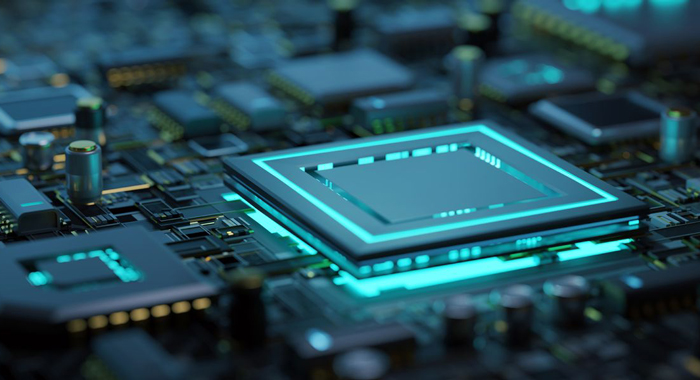After several consecutive quarters of destocking adjustments, the overall inventory of the Power Management ICs industry has dropped significantly. However, compared with the industry average, it is still at a relatively high level. The main manufacturers affected are Texas Instruments and Analog Devices Inc.

Source: Internet
PMIC will be driven by the market from 2020 to 2022 and become one of the electronic component categories with the largest shipment volume. PMIC is mainly responsible for the conversion, distribution, detection, and other control functions of required electric energy in electronic equipment systems. It is the center and link of electric energy supply for all electronic products and equipment.
Based on its wide range of application fields, the demand for PMIC was once ranked at the forefront of sales. However, since the second half of 2022, the market has begun to decline, furthermore, TI and ADI have successively taken price reduction measures to seize the market, causing the industry to gradually enter a trough.
Why is the PMIC Market So Bleak?
The transition from high demand to trough is mainly due to the advance overdraft of demand. In the Q2 quarter of 2022, the prosperity of consumer electronics began to decline, and the market took a sharp turn, and further spread to the Internet, communications, industrial and other markets. By Q1 of 2023, the market of PMIC has been reaching its peak inventory.
After two consecutive quarters of performance decline, international manufacturers began to take measures for inventory management. Industry leader Texas Instruments began price reduction promotions in May, and other manufacturers have followed suit. Therefore, the destocking adjustment in the past six months has caused a significant decline in the industry's overall inventory. However, the current inventory turnover days of international manufacturers still exceed the industry average of 30 days. TI's inventory at the end of Q3 in 2023 was US$3.9 billion, an increase of US$179 million from the previous quarter. Inventory turnover days were 185 days, a decrease of 1 day month-on-month.
Due to weak overall demand, TI has slowed down the start-up of factories, and the growth rate of inventory has also slowed down accordingly and will continue into the fourth quarter. ADI's inventory turnover days are 125 days, and the capacity utilization rate will be reduced again. It is planned to reduce the inventory turnover days to less than 120 days.
Market Recovery and Performance Improvement
Benefiting from the traditional peak season of consumer electronics, major PMIC manufacturers achieved month-on-month growth in revenue and net profit in the single quarter of Q3, with NXP's net profit increasing by 12.75% month-on-month. The month-on-month growth rates of onsemi and STMicroelectronics were 1.06% and 8.89% respectively. TI, ADI, and Infineon experienced a month-on-month decline, but Infineon was in a growth trend, with a year-on-year growth of 2.45%.
As the world's largest analog chip manufacturer, TI's revenue in Q3 was US$4.53 billion, down 13.5% year-on-year and up 0.02% quarter-on-quarter. It has achieved quarter-on-quarter revenue growth for two consecutive quarters. However, its net profit was US$1.71 billion, down 25.53% year-on-year and 0.75% month-on-month. Affected by an unfavorable product mix and low capacity utilization, ADI is obviously still under inventory pressure. In Q3, its revenue was US$2.716 billion, down 16.36% year-on-year and 11.70% month-on-month. Net profit was US$498 million, down 46.76% year-on-year and 43.17% month-on-month.
According to data from Future Electronics, orders for switching regulators from MPS, PI, Infineon, onsemi, STMicroelectronics, Renesas Electronics, and other manufacturers are currently growing in the automotive and consumer electronics fields, and overall prices remain the same. Relatively stable, some prices are on the rise, and product delivery is around 25-45 weeks. However, the demand for orders in the industrial and communications fields is different and is still in the accelerated destocking stage.
Automotive Power Management ICs
Since various electronic products and equipment have power management requirements such as voltage regulation, there are many downstream application scenarios for power management chips, including consumer electronics, automotive electronics, industry, new energy, communications, and other fields. The recovery in demand for consumer electronics has prompted consumer power management ICs to achieve sales growth in Q3, while market demand in industry and communications remains sluggish.
It is worth noting that the prospects for the new energy vehicle industry are still promising. Most PMIC manufacturers that have achieved revenue growth this year have a large proportion of their automotive business.

Source: Internet
Automotive power management ICs are widely used in automotive smart cockpits, autonomous driving, body electronics, instrumentation and entertainment systems, lighting systems, BMS and other scenarios. Among automotive power management ICs, the AFE chip gap is the largest in automotive Battery Management Systems (BMS). The AFE (Analog Front End) chip is the core device in the BMS system. It is responsible for collecting voltage and temperature, using specific algorithms to estimate parameters such as SOC and SOH of the battery, and transmitting the results to the control chip. The main manufacturers of this type of chips are TI, Analog Devices and Infineon.
DC/DC switching regulators are widely used in the field of automotive electronics and are suitable for application scenarios such as automotive smart cockpits, charging piles, motor controllers, vehicle chargers, and automotive lighting.
Two main factors are driving the growth of PMIC market demand: transportation electrification and autonomous driving. The world has made a deal on the need to decarbonize the industry to reduce carbon dioxide emissions, and vehicle electrification is an inevitable trend. In addition, with the diversity of market needs, autonomous driving has become one of the development directions of electric vehicles in the future.
Although Texas Instruments' revenue and net profit did not perform very well in the Q3 quarter, the personal electronics market increased by about 20% from a lower base, and the automotive market also achieved growth. AD's automotive business revenue also achieved a year-on-year growth of 14%, with strong growth in functional safety power, battery management, and in-car connectivity solutions.
Conclusion
Although the power management IC market is currently sluggish, after more than a year of adjustments, most manufacturers have made significant improvements in inventory, demand, and performance. Texas Instruments is currently observing industry inventory and customer demand dynamics to prepare for the next economic upturn.